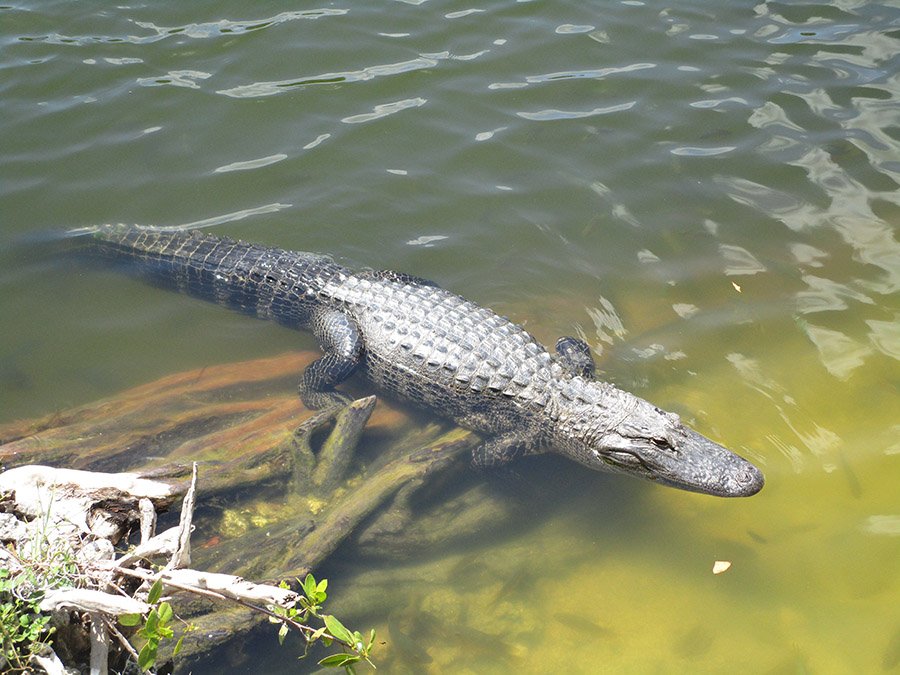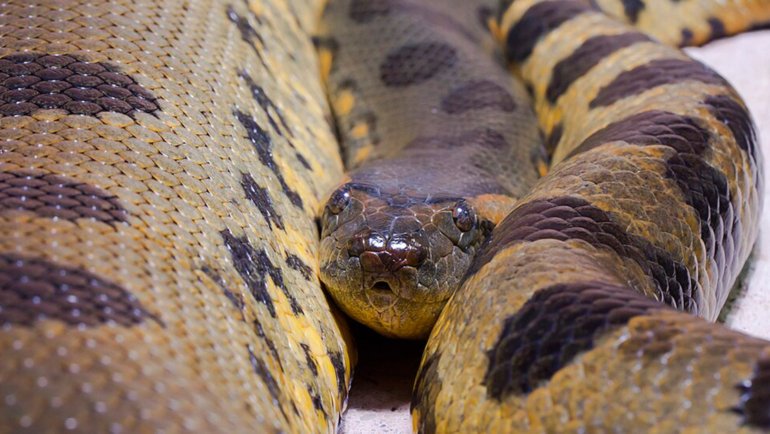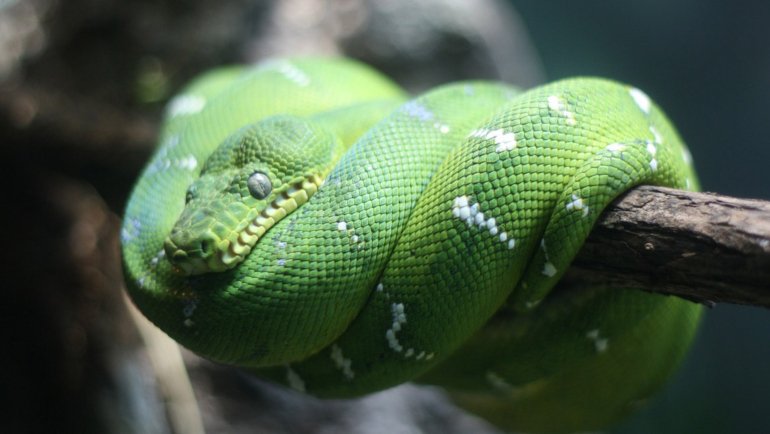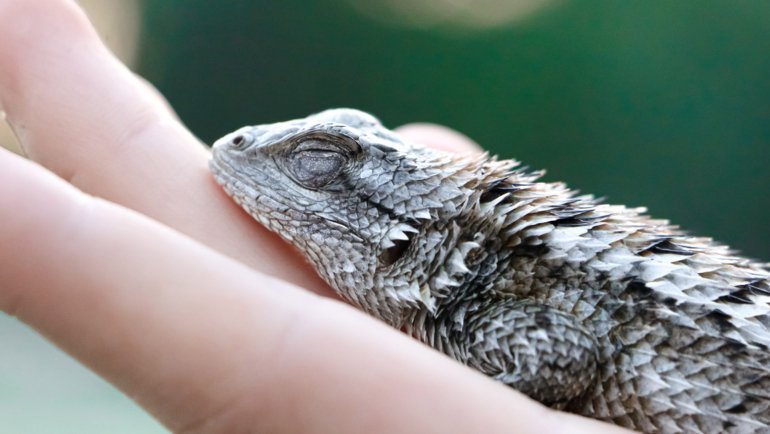Alligators, often emblematic of swamps, bayous, and warm southern waters, conjure images of humid climates and sunbathed riverbanks. For many, the mention of an alligator might bring to mind states like Florida or Louisiana, places drenched in sun and rich with wetlands.
But as with many things in nature, the expected isn’t always the rule. So, it leads us to an enticing question: just how far north do these formidable reptiles venture?
Alligator’s Preferred Habitats and Climate
Alligators are ectothermic, meaning they rely on external sources, like the sun, to regulate their body temperature. These cold-blooded creatures thrive in freshwater environments such as swamps, marshes, rivers, and lakes. These habitats provide them with ample food, suitable nesting sites, and, most crucially, the warmth they require for survival.
Because they don’t generate heat internally, the climate of their habitat plays a pivotal role in their daily activities, growth, and reproductive success. Cold temperatures can slow an alligator’s metabolic processes and make it lethargic. In extremely cold conditions, they can go into a state called brumation, which is a reptilian version of hibernation.
Alligator Range in the U.S.
The American alligator (Alligator mississippiensis) is predominantly found in the southeastern United States. Traditionally, they range from the humid wetlands of Florida to the marshes of eastern Texas. Moving north, their presence is strong in states like Georgia, South Carolina, and parts of North Carolina. In fact, North Carolina’s Alligator River is aptly named for its notable alligator population.
However, as we progress even further north, sightings become less common. While it’s a rarity, there have been occasional reports of alligators in states like Virginia. These are, however, often outliers or instances where alligators have been released or have wandered far from their typical range.
Here are the U.S. states where the American alligator is traditionally present:
- Florida
- Georgia
- Alabama
- Mississippi
- Louisiana
- South Carolina
- North Carolina
- Texas
- Arkansas
- Oklahoma
It’s worth noting that while these states have native populations of alligators, the density and distribution within each state can vary. Some states, like Florida and Louisiana, have denser populations, while in others, the presence might be limited to specific regions or habitats.
Check How and Where to See Alligators in Your State!
- Alabama
- Alaska
- Arizona
- Arkansas
- California
- Colorado
- Connecticut
- Delaware
- Florida
- Georgia
- Hawaii
- Idaho
- Illinois
- Indiana
- Iowa
- Kansas
- Kentucky
- Louisiana
- Maine
- Maryland
- Massachusetts
- Michigan
- Minnesota
- Mississippi
- Missouri
- Montana
- Nebraska
- Nevada
- New Hampshire
- New Jersey
- New Mexico
- New York
- North Carolina
- North Dakota
- Ohio
- Oklahoma
- Oregon
- Pennsylvania
- Rhode Island
- South Carolina
- South Dakota
- Tennessee
- Texas
- Utah
- Vermont
- Virginia
- Washington
- West Virginia
- Wisconsin
- Wyoming
Alligator Sightings Outside Traditional Ranges
In recent years, there have been intriguing reports of alligator sightings well beyond their traditional southern strongholds. For instance:
- Virginia and North Carolina: Although it’s not entirely shocking to find alligators in these regions, their presence in certain northern parts of these states is noteworthy.
- Arkansas and Tennessee: Alligator sightings in these states’ freshwater systems have occasionally made local news headlines, particularly in areas where residents are unaccustomed to such reptilian neighbors.
While some of these sightings can be dismissed as one-off events or escaped pets, others suggest a potential shift in the alligator’s range. The big question remains: are these sightings mere anomalies, or are they harbingers of an expanding alligator population moving further north?
Factors Influencing Northern Movement
Several factors are thought to influence the northward movement of alligators. Let’s delve into some of the main contributors:
Climate Change: As global temperatures rise, so does the potentially habitable range for alligators. Warmer temperatures can render previously inhospitable regions more accommodating for these cold-blooded creatures. Additionally, milder winters in traditionally colder states could mean that alligators can survive and perhaps even thrive there.
Human Activities: Accidental or intentional releases are a significant factor. Whether it’s an exotic pet owner releasing a now-too-large alligator or transport-related escapes, human actions play a role in where alligators end up.
For example, juvenile alligators, often bought as pets when they are small and manageable, can grow quickly. Some owners, unable to care for the mature reptiles, might release them into local water systems, unintentionally introducing the species to new areas.
Natural Territorial Expansion: Alligators, particularly young males, are known to travel in search of new territories, especially when facing competition in densely populated habitats. This natural quest for space and resources could push some individuals to venture further north than expected.
As a culmination of these factors, alligators’ presence in regions previously considered outside their range necessitates close monitoring and a deeper understanding of their migration patterns. The effects of such movements on local ecosystems, as well as on the alligators themselves, remain to be seen.
Potential Implications of Alligators Moving North
As alligators venture northwards, the implications of this migration are manifold, encompassing ecology, human safety, and conservation:
Ecological Impact on Northern Ecosystems: Alligators are apex predators. Their presence in a new ecosystem can shift the balance of local fauna. They might outcompete or prey upon local species, possibly leading to changes in biodiversity and dynamics of local water systems.
Human-Alligator Interactions: Residents in northern states might not be accustomed to living alongside alligators, leading to a potential increase in surprise encounters. This unfamiliarity can result in both safety risks for humans and alligators, particularly if residents try to approach or handle the reptiles without proper knowledge.
Conservation and Management Considerations: The introduction or migration of a species into a new environment necessitates revisiting conservation and management strategies. Authorities would need to assess whether to allow the natural expansion, relocate wandering individuals, or implement measures to control the population.

The Future of Alligator Distribution
Understanding the present helps inform predictions for the future:
Predictions Based on Current Trends: If current trends continue, it’s plausible that alligators might establish more permanent populations in northern states. With milder winters and adequate water sources, these states could offer suitable habitats.
Global Warming’s Role: As global temperatures continue to rise, the hospitable range for cold-blooded animals like alligators might further expand northwards. While this offers new territories for alligators, it might also disrupt the ecological balance of these areas.
Wildlife Management Adaptations: States that previously never had to consider alligators in their wildlife management strategies might soon find themselves adapting. Strategies could encompass public education, habitat management, and potential relocation efforts.
Frequently Asked Questions
Why are alligators moving north?
The reasons are multifaceted, encompassing factors like climate change, territorial expansion, and human-induced relocations.
How do alligators survive colder temperatures?
Alligators have a remarkable ability to slow down their metabolism in cooler temperatures, a state known as brumation.
Are northern states prepared for potential alligator populations?
It varies by state. Some states with occasional sightings might be better equipped than those where such occurrences are extremely rare.
How can residents of northern states safely coexist with alligators?
Education is key. Learning about alligator behavior, keeping a safe distance, and knowing who to contact if an alligator is spotted are essential steps.
Are there any invasive alligator populations established in the northern states?
While there have been sporadic sightings, there’s no concrete evidence of established invasive populations in the far northern states as of now.
How do colder temperatures affect alligator metabolism and behavior?
Cold temperatures can cause alligators to enter a dormant state, reducing their activity levels significantly.
What should residents do if they spot an alligator in unexpected regions?
It’s crucial to keep a safe distance, avoid feeding or antagonizing the animal, and contact local wildlife authorities.
Can alligators survive in freshwater habitats in northern climates?
While alligators prefer freshwater habitats, extended exposure to extremely cold temperatures can be detrimental, even fatal.
Other Articles About Alligators
- American Alligator: Characteristics, Diet, Facts & More [Fact Sheet]
- Are Alligators Dinosaurs?
- Can Alligators Climb Trees? Unraveling The Myth
- How Do Alligators Mate? A Look into Alligator Reproduction
- What is an Alligator’s Bite Force? How Does it Compare With Other Animals?
- Baby Alligator Sounds: The Meanings Behind The Chirps
- Are Alligators Dangerous To Humans? What You Need to Know
- Alligator Eggs: The Secrets of Reptilian Reproduction
- Komodo Dragon vs. Alligator: Main Differences & Who Wins in a Fight?


